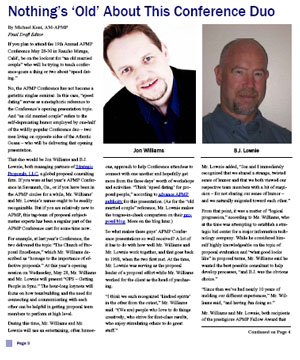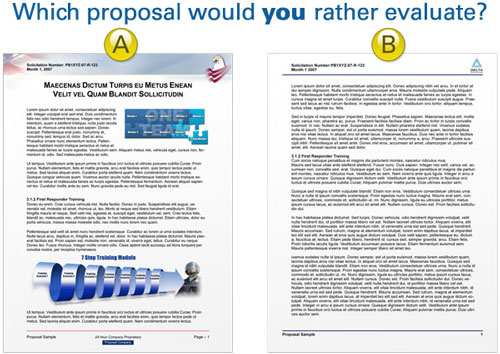The recent news of the merger between leading proposal software providers Sant and Kadient has provoked much discussion within the proposal profession. I thought this would be an interesting topic, to explore further, so took some time out at the APMP Conference at the start of June to pose a few questions to Brian Vass – Vice President, Marketing for The Sant Corporation.
BV – There are a lot of synergies between our product families and organizations that made the merger an ideal marriage. Our customers will benefit from everything the two companies have to offer – technology, people, and an incredible depth of expertise. They now have access to a broader set of capabilities from a single vendor to address what their sales team needs throughout the sales cycle.
Customers will also benefit from:
• Our commitment to customer satisfaction through the “Customer for Life” program
• Access to an online Customer Community to share ideas, best practices, and locate implementation resources
• Opportunity to attend an annual customer conference
JW – Any views yet on which products will survive into the long run – or how you’ll decide that? Surely one of your aims must be to rationalise and pick the “best of the best” of the two product sets?
BV – As a combined company, our commitment is to provide our customers the very best of each of our solutions for RFP and proposal creation, sales content management, and the strategic delivery of that content through sales playbooks. Our Product Management team is working on an integrated product strategy that will incorporate the best of both offerings. For now, it’s “business as usual” for our customers.
JW – It’s always seemed as though the two companies have spurred each other on in the race to develop their respective product sets. Long-run, will the loss of competitive pressure result in a slowdown in the pace of development?
BV – We still face competition in the market and we anticipate new competitors to emerge. Regardless, we develop products that meet the needs of our customers. We capture feedback through our customer community, focus groups, surveys, annual conference, and daily interactions. Our commitment to providing customer-driven product upgrades, on a timely basis, will not change as a result of the merger.
JW – The new company: focused on proposals / RFPs – or on sales collateral more broadly?
BV – All of the above. We remain fully committed to provide solutions that arm sales professionals to:
• Automate the creation of client-focused proposals, RFP responses, and presentations
• Quickly and easily locate, personalize, and deliver their company’s best sales and marketing content
• Access situation-specific coaching through electronic “sales playbooks” within their CRM system. The playbooks guide the sales person through the steps of the sales cycle and provide links to relevant content & advice.
JW – Bitter rivals suddenly becoming best friends. How are the people in your respective teams getting on now they’re on the same side of the table?
BV – We’re getting on surprisingly well. It’s been strange at times sharing our sales pipelines, product roadmap, marketing strategies, and other internal gems. But we’re making our company better by taking the best practices from each organization. And everyone is motivated to be the largest provider of sales enablement solutions in the marketplace.
JW – And finally – what will be the name of the merged company?
BV – Kadient and Sant will operate under their existing names until a rebranding project is completed later this year. Stay tuned!
Many thanks to Brian for taking the time to share his views. If you have any thoughts or questions regarding the merger, do add your comments to this post!



 RSS Feed
RSS Feed
